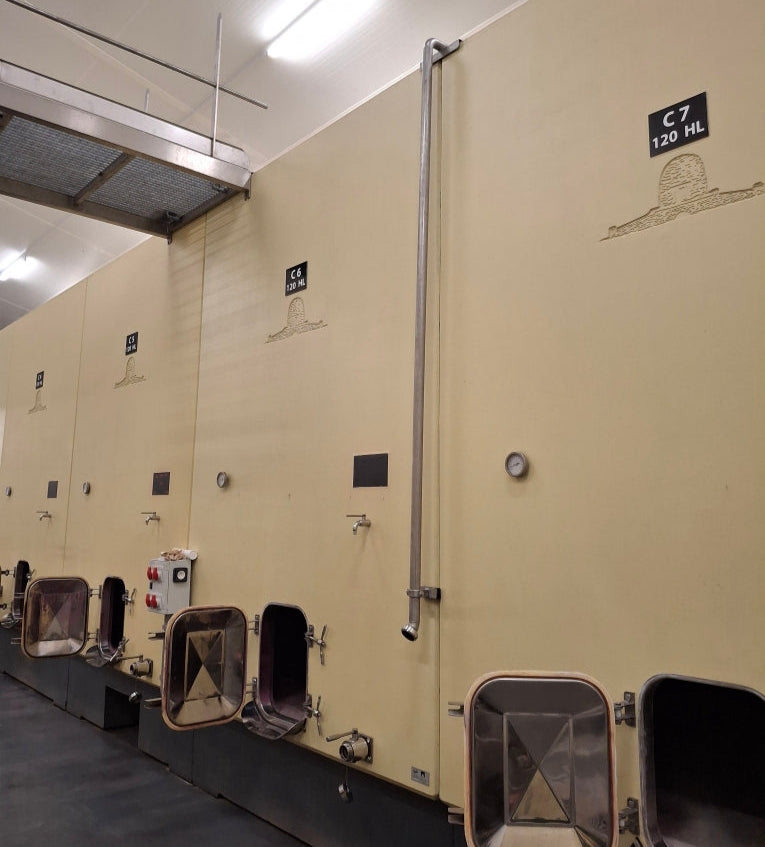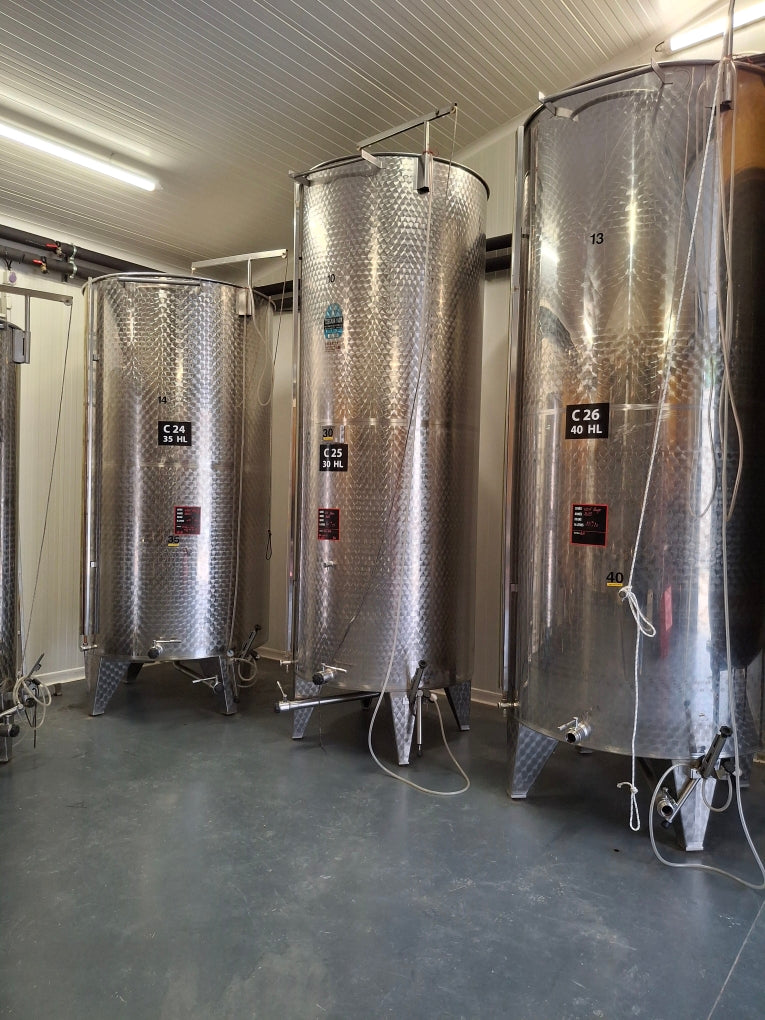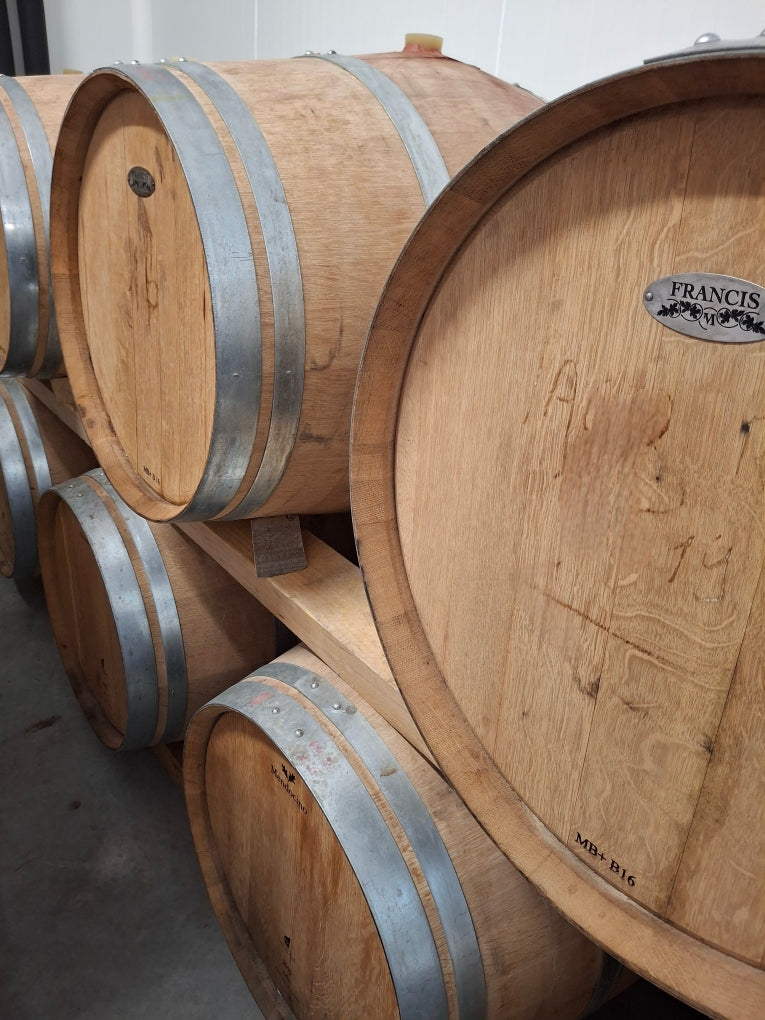The Cellar
The Domaine Cellar: Equipment Adapted to Each Vinification
At Domaine de Cabridon, our cellar is designed to best support each stage of the vinification and maturation of our wines. We have selected specific materials, adapted to the characteristics and requirements of our vintages. Thus, we work with several types of containers: concrete, stainless steel, fiberglass and wooden barrel vats , allowing an approach adapted to each vintage. Each of these containers has unique characteristics influencing the structure, aromas and texture of our wines.

gentle winemaking
Concrete tank
Our concrete vats, with a capacity of 80 to 120 hectolitres, are used both for the vinification of reds and for the storage of certain wines. Manufactured on site, they are made of raw concrete, without coating, which gives them natural properties ideal for the maturation of wine.
Why Concrete?
The choice of concrete is based on several advantages:
- High thermal inertia: It ensures a more stable temperature during fermentation, promoting gentle extraction of aromas and tannins.
- Natural micro-oxygenation: Thanks to its slight permeability to oxygen, it allows the wine to evolve gradually, without rushing it.
However, these tanks require rigorous maintenance to avoid the development of organoleptic defects. In addition, they are sensitive to cracks and may require regulation systems.
thermal if needed.

modernity and precision
Stainless steel tank
Stainless steel , a neutral and resistant material, is particularly used for our white and rosé wines and certain red vintages requiring strict control of fermentation. Thanks to their ease of cleaning , these tanks preserve aromatic purity and avoid any unwanted interaction with the wine.
They offer precise temperature control , thanks to integrated regulation systems, allowing fermentation and aging to be perfectly adapted to each vintage.

flexibility and practicality
Fiberglass tank
Fiberglass tanks are
designed from reinforced plastic , which gives them great lightness . This feature not only facilitates their installation , but also their movement , thus offering valuable flexibility within the cellar. Their transparency allows a quick visual check of the wine level, thus avoiding the use of a gauge. These tanks are mainly used for the storage and fermentation of
some wines, notably through the use of a floating cap . This
The latter rests directly on the wine, preventing any oxidation and allowing the volume used to be adjusted as needed.
One of the major advantages of these tanks is their ease of maintenance , making their cleaning simple and effective. However, they also have some drawbacks . Their fragility , more marked than that of concrete or stainless steel tanks, requires careful handling.

complexity and refinement
Wooden barrel
Barrel aging plays a fundamental role in the development of our wines. Unlike concrete vats which promote limited micro-oxygenation, wood allows for an exchange
subtle with the outside air, bringing complexity and finesse.
The Effects of Wood on Our Wines:
- A softening of the tannins, making the wines silkier and more harmonious.
- Slow oxidation, promoting balanced maturation without altering the freshness of the wine.
- An aromatic development, where the wine gains depth and complexity without being excessively marked by wood.
Our 225-litre barrels are not new: they have already held four wines, which helps to avoid an overly marked woody imprint and to favour the finesse and elegance of our vintages.
A Subtle Balance to Enhance Each Wine
The combination of these different vats and barrels allows us to work each wine with precision and know-how . We adapt our methods according to the grape varieties, the vintage and the profile sought, in a permanent quest for quality and authenticity .
We invite you to discover our cellar during a visit to Domaine de Cabridon, to learn more about our methods and taste our wines directly at the source!




